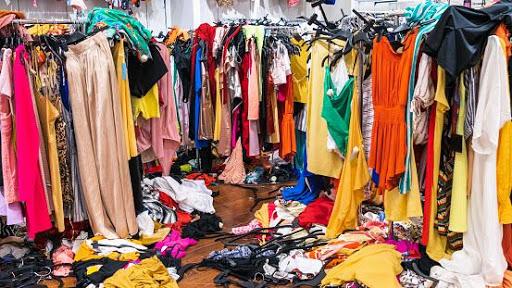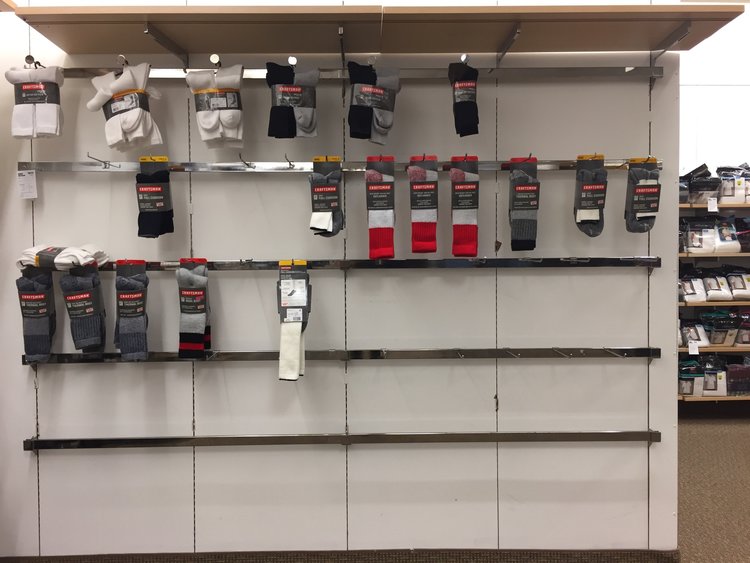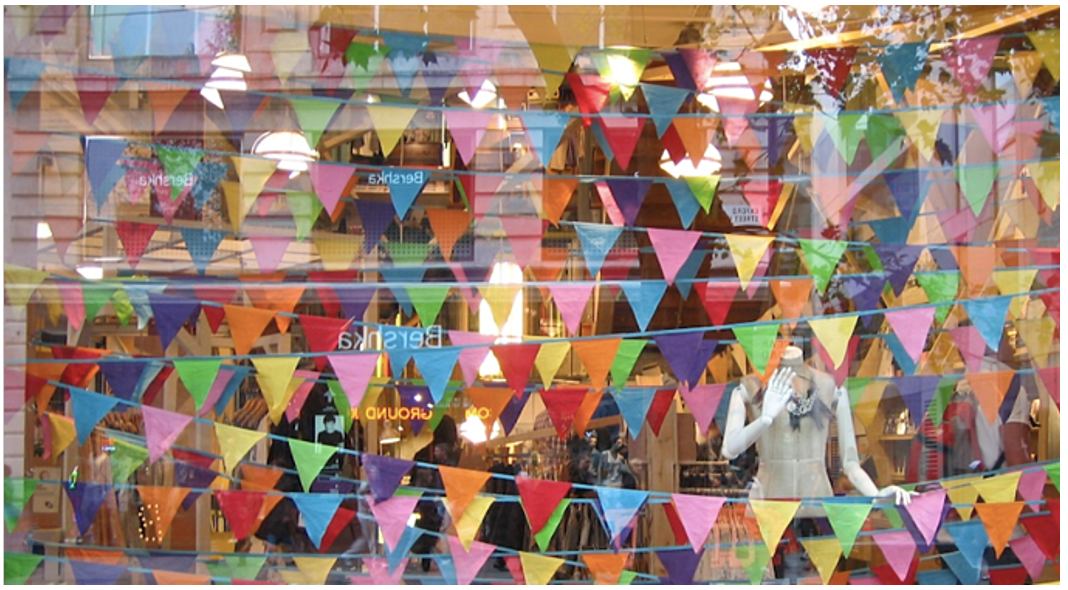Many errors made in display can easily be avoided. Some of the most common errors include the following:
Too Much/Not Enough Merchandise
There is no rule that specifically state how much merchandise should appear in a display area. One consideration is the price of the merchandise. The more expensive the item, the fewer displayed. Exercise caution so that a display area does not:
- Appear crammed with many related items,
- Have so many different items that any selling message is lost, and
- Appear aesthetically-offensive to the viewer.

Too Little Merchandise
A window or display area with too little merchandise makes a store appear to be going out of business or indicates to the customer that the establishment is less than prosperous. Generally, the reason for lack of merchandise in a display is that the merchandise has been sold out of the display and has not been replaced. If the items needed for the display are unavailable, the dimensions of the display area need to be reduced to make it appear in proportion with the available merchandise. Poor planning of what merchandise is to be placed in a display may also cause a display to appear empty.

Lack of Underlying Theme
Merchandise is often placed in a space with no selling message, theme, or motif. Regardless of the type of merchandise used, the location or the store type, a display needs to have a strong message or underlying theme. The consumer should be able to understand the concept presented by the display in a few seconds.
The opposite is using too many mini themes in a display, making each one completely ineffective. It is possible to effectively combine several types of merchandise in one area using one theme. An example would be various gift items, such as toiletries, glassware, smoking equipment, and accessories, shown together with a sign reading imports or gifts from overseas. The signage brings all the goods into the gift classification and it makes sense to the viewer.
Too Many Props
There is no specific rule that stipulates the number of props appearing in a display. However, the error of over-propping a display can be more serious than using too few props. The type and number of props are dependent on the merchandise. The display of a living room suite will need fewer props to complete its message. Other goods, especially smaller items, will need more props to elevate it to eye level or provide a central theme to the grouping.

Poorly Selected Props
Evaluate props as to whether they are seasonal, rustic, contemporary, feminine, or masculine, and whether or not they will appeal to the store’s target market. Props are important to effectively present a display with a theme.
Therefore, the props must be in harmony with the goods shown. For example, a green velvet backdrop will not be effective in a display promoting summer merchandise.

Displays Changed Too Seldom
Guidelines for developing displays have been discussed throughout this course. Utilisation of the visual merchandising techniques can assist review and/or change of displays. As a standard, many interior displays are changed daily, because they are effective, and merchandise sold directly from them need to be replaced.
Large window displays may be changed as often as two times a week or as infrequently as every other week. This depends on the season and the length of time a current store theme has been planned. An example of a display that might stay longer would be an unusual Christmas display.
The expense, time, and planning of a display is also used as a guideline for frequency of change. Special windows and internal store promotions have a longer display life. However, no display or set of props should remain until it collects dust and every person in the community has seen it several times. Frequently changing displays presents a positive message to the community, provides opportunity to show more merchandise and presents more messages to the shopper.
Length of Time Necessary to Change A Display Is Too Long
An empty display area is a time of no sales. Plan display-work so that all the necessary equipment and merchandise is gathered prior to dismantling the old display. Change the display when there is the least amount of customer traffic.
Limited or No Display Budget
Money is a problem for everyone in and out of retailing. Display areas are often budgeted with what is left over after all other monetary needs have been planned. Frequently, that boils down to no budget for displays. Avoid the “low-budget look” by using such things as crepe paper, tissue paper, construction paper or perishables, but generally free items like grass, weeds, logs, branches, and other things provided by nature. Do not use too many poster board signs.
Creativity is needed to plan and execute a great display with no budget. Good theme development without expensive background materials is possible. An example of this, for a bed and bath shop, might be towels hung on a clothesline to serve as a backdrop for a towel display, rather than going to the expense of tiling a wall. Old packing crates or orange crates with scrap wood from a lumber yard can be used to design an interesting display that raises the merchandise to eye level. Attic treasures or various pieces of furniture are often used as display props. These items can often be inexpensive or borrowed for the duration of the display.
Lack of Attention to Detail
It is very important to make a good impression. One of the best ways to do this in display work is to pay attention to small details. This is the first thing the customer notices. Below is a list of things that should be taken care of prior to declaring the display finished:
- Remove pins or hide them so that they do not show.
- Clean and dust all surfaces.
- Clean glass.
- Be sure that signs provide all the necessary information.
- Be certain that signs are free of ink stains and are not dirty.
- Use some form of border on all signs.
- Be certain that any merchandise suspended from the walls or ceilings will stay fixed for the duration of the display.
- Accessorise merchandise appropriately.
- Remove all display tools from the display area.
- Clean and/or vacuum display floor coverings.
- Hide lights used in the display so the customers do not see them. Be careful that nothing is near or touching display lights, to prevent fire.
- Always check the display area from all angles to be sure all merchandise is easily visible and aesthetically pleasing.
- Check displays daily to be certain everything is still in its proper place